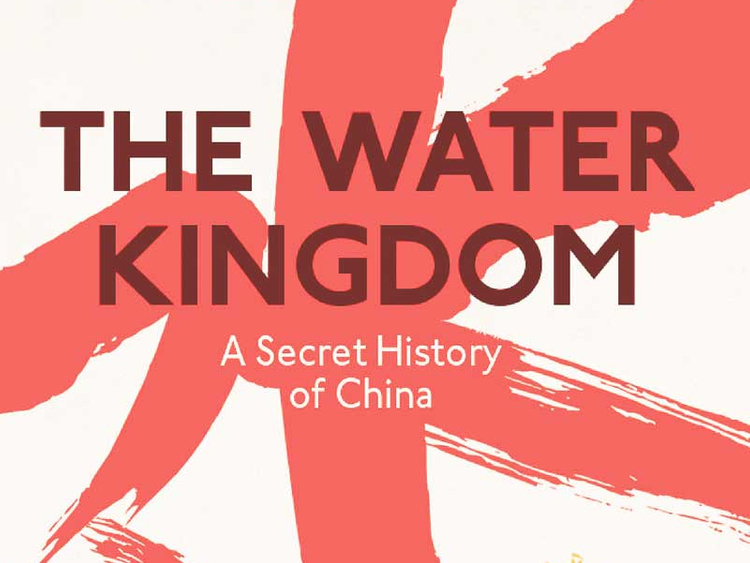|
|
The Water Kingdom |
By Philip Ball, Bodley Head, 352 pages, £25 |
What is the historian’s ideal vantage point? Surveying the scene from far overhead as kings and queens come and go, empires blossom and wither? Jostled inside a noisy, expectant crowd? Perched, perhaps, on the shoulder of some legendary man or woman? Conventional wisdom says all of the above. The perfect history would be told from the point of view of everywhere and nowhere, from inside and outside. Obviously, it’s impossible. Or is it?
In “The Water Kingdom”, Philip Ball, the prolific science writer, proposes to narrate the story of China from the point of view of water. It is one part promising premise to one part absolutely terrifying task. Ball is ambitious from the outset, using China’s great rivers to show us how profoundly water puts us in our place: capriciously feeding the land or starving it; cleansing the people or washing them away to their deaths; testing the ingenuity of engineers. Rivers shape politics, too. The mandate of heaven — its possession and loss — may be revealed in whether rivers behave themselves or break their banks.
The upstart official Wang Mang discovered as much when he seized the throne around the year AD9, only to find the Yellow River unleash floods and famine on an awesome scale. His authority rapidly diminished and then disappeared. And where real-life rivers don’t provide the necessary symbolism, artists step in: for Song dynasty painters, rough waters could be used to represent tough times and imply a political rebuke; placid ones suggested good governance. But a strong ruler should be seen to confront nature as well as enjoy its good offices. From the (probably) mythical Yu the Great — who turned his back on home and family to crisscross China building flood defences — to the “water mandarins” of the Ming and Qing dynasties, and right up to Chairman Mao, keeping people dry was the measure of the man.
More intimately, we find the inner worlds of Chinese philosophy powered by water, filled with aqueous figures of speech. Ball points out that although the “Dao” of Daoism — one of China’s oldest takes on human life — translates as road or path, its key thinker Lao Tzu preferred the imagery of a waterway.
While a path is a human creation, life is more like the flow of water: largely independent of our plans and schemes. We may direct water to some degree, but ultimately to live well is to accommodate ourselves to its whims. Confucius, more focused on the behavioural than the metaphysical, laid down that a gentleman will always pause to contemplate a great river. “Used as a level, it is always even — like law. Compliant and exploratory, it reaches to the tiniest point — like perceptiveness. That which goes to it, and enters into it, is cleansed and purified — like the transformation of goodness. In twisting around 10,000 times but always going eastward, it is like the will.”
“The Water Kingdom” traverses fascinating, endlessly fertile territory. But truly to do this justice, the writer would need to be a formidable polymath: sinologist, poet, geographer, romantic. At times, Ball shies away from reaching for full mastery of his topic, and retreats into the more modest role of interested amateur.
There is nothing intrinsically wrong with that approach, but it leaves the flow of what should be a beautiful book interrupted by scholarly scruples that could, with no loss of honesty, have been handled in the endnotes.
The sensibilities of a modern science writer may be playing their part, here. The relationship of water to qi — the life-force concept in Chinese thought and medicine — receives less attention than it deserves. And the treatment of China’s poets and artists feels like the result of a hurried and not always revealing process of selection and commentary.
Ball is at his best in these sections when he allows his protagonists to speak or act for themselves: a 14th-century critic memorably complaining that lazy artists of his day placed waterfalls “on each fold of a mountain, as if they were hanging towels on a rack”; a Tang dynasty painter specialising in the dancing, drunken use of his own hair to paint rocks and streams.
“The Water Kingdom” is strongest on technology, society and statecraft. Ball shows rival Daoist and Confucian ideas about the nature of water and humanity spilling over into rival theories of hydraulic engineering. Other philosophers speculate about how particular riverheads give rise to distinct characteristics in the people whose bodies become part of the water’s journey from source to sea. And water serves to inspire and illustrate rather optimistic political theories, not the least of which was the conviction, featured in the “Zhuangzi” (a classic Daoist text) that since people’s loyalties and actions will naturally flow towards rightful leaders and duties, the ideal ruler should keep his interventions to a minimum.
We encounter darkness as well as light, with dykes exploited as a weapon of war. In the 1640s, the great city of Kaifeng — as Ball puts it, a “basin ready to be filled if the [Yellow] river broke its banks” — was flooded to its rooftops and 300,000 people killed when its own governor destroyed nearby dykes in an attempt to break a siege.
After the revolution, it was Mao’s turn to don the mantle of water-tamer in chief, planning ambitious new engineering projects, including work on nearly 1,800 kilometres of dykes and 46 dams on the Yellow River alone, and making a famous vigour-signalling swim in the Yangtze that helped kick-start his Cultural Revolution. (His comrade Zhou Enlai took a more prosaic approach to the potential of Chinese water, boasting to Pakistani army officers about how an emerging China-India rivalry could be swiftly settled: “All we would need to do is march half our population to the top of the Himalayas, and with their backs turned to their own country, they would all piss at the same time. The result would be floods in India for at least half a year.”)
By far the greatest Communist boast has been the vast Three Gorges Dam on the Yangtze River, its reservoir (unlike the Great Wall) visible from space and capable, it is claimed, of meeting more than 10 per cent of China’s national energy needs. This is modern engineering on an almost mythical scale. Ball offers a strong and balanced account here of the promise versus the social and ecological perils of hydro for China’s future, from flood control and the provision of much-needed irrigation water to mass uprootings of people and trees.
There is a great deal in “The Water Kingdom” to inspire. It should make us rethink our own relationship to water, for a start. And it draws our attention to China’s impending environmental crisis — Ball tells us that three quarters of the country’s water is now undrinkable, with about 60,000 deaths annually linked to dirty water. But this reader was hoping the book might somehow become more than the sum of its many insights and vignettes — that it would develop some argument about water in Chinese history capable of making sense of the disparate directions in which the subject matter pulls.
Instead “The Water Kingdom” remains true to the elemental nature of its topic: in some places a wave of ideas threatening to overwhelm writer and reader alike; in others a river meandering over pebbles and stones, occasionally turning back on itself; untamed because untameable — an ultimate vantage point that can never be ours.
–The Telegraph Group Limited, London 2016










